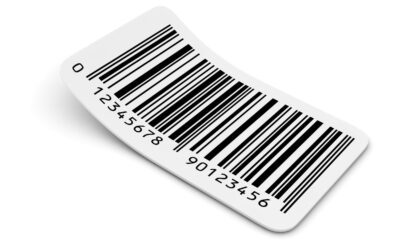
Many industries face a real challenge in keeping track of valuable assets. Asset tags have emerged as a solution for tracking and managing valuable assets. Among the different technologies, BLE tracking tags score over others for many reasons. The article will discuss the pros and cons of BLE tags in asset tracking and how they increase operational efficiency and security.

Asset Tracking Bluetooth: Understanding Technology and Its Application
BLE has changed the face of asset tracking with efficient and low-power capabilities. BLE stands for a wireless communication technique optimised for short-range transmissions. Utilising Bluetooth BLE in conjunction with gateway tracking systems enables precise and real-time monitoring of assets, making it an indispensable tool for modern businesses.
What is Bluetooth Asset Tracking?
Bluetooth asset tracking is a state-of-the-art solution utilising Bluetooth technology in asset tracking and management. Asset tracking tools using Bluetooth record a history of real-time locations, which may prove very instrumental in helping firms trace their valuables to their last known whereabouts. such tools are especially effective where traditional GPS may not work as expected – for example, indoors or in densely populated areas.
Now, how do Bluetooth trackers work? Fundamentally, BLE trackers are a type of Bluetooth tracking device that transmits low-power signals, which can be detected by all devices equipped with Bluetooth within its range. The detected signals will, in turn, be sent to a receiver, such as a smartphone or some kind of gateway, to identify a location and track assets in real time. This system ensures seamless and continuous Bluetooth tracking with minimal power consumption.
Benefits of Using Bluetooth for Asset Tracking
Bluetooth technology confers several advantages in terms of asset tracking, hence standing out as an excellent choice for any business with the intention to track activities and assets. A Bluetooth asset tracking system facilitates critical aspects of smooth operations through real-time data, improved accuracy, and cost-effectiveness. A company can reduce losses and significantly increase productivity by integrating Bluetooth tracking into its assets management strategy.
- Enhanced Real-Time Tracking: A Bluetooth asset locator allows businesses to monitor the precise location of their assets at any given moment. This ensures that critical equipment and items are always accounted for and can be quickly located when needed.
- Cost-Effective Solutions: Tags used to track equipment via Bluetooth technology are inexpensive. They are relatively affordable and easy to maintain, making them economical for any business.
- Versatility and Flexibility: Bluetooth systems can tag two or more assets used in a variety of environments, including indoor and densely populated areas where GPS tracking may fail. This flexibility makes them ideal for diverse applications, from warehouses to healthcare facilities.
Run a Bluetooth asset tracking system for the reliable and efficient management and monitoring of your assets. Knowing what a Bluetooth tracker is will let you realise its power in delivering real-time data and improving accuracy. With various BLE devices examples, such as equipment tracking tags and asset locators, Bluetooth tracking is a valuable addition to any asset management strategy.

Bluetooth Asset Tracking Tags: Types and Features
Bluetooth asset tracking tags come in various types with different feature sets, each designed to meet specific business needs. Understanding the differences in BLE asset tracking options, such as the capabilities of each asset tracking tag and asset tagger, can help you make informed decisions. By selecting the right type and features, you can optimise your asset management and ensure the best fit for your operational requirements.
Types of Bluetooth Asset Tracking Tags
There are various Bluetooth asset tracking tags; each designed to track different types of assets. Understanding them will help you choose the best option for your business.
- Standard Bluetooth Trackers: These are common for general asset tracking. They emit signals detected by nearby Bluetooth devices and are ideal for everyday items like keys, bags, and tools.
- Bluetooth GPS Trackers: These trackers combine Bluetooth with GPS to enhance location accuracy. They are used for assets that require accurate positioning outdoors and indoors, such as vehicles and shipments.
- BLE Tags: Designed for low energy consumption, BLE tags can last for years without battery replacement. They are suitable for tracking valuable assets in hard-to-maintain environments and often display the BLE logo, ensuring compliance with Bluetooth standards.
Features and Specifications
Popular Bluetooth asset tracking tags come with a range of features that make them highly effective for various applications. Standard Bluetooth tags usually include features like real-time location updates, easy attachment to various items, and compatibility with multiple devices. These features ensure that businesses can track everyday items like keys and tools with minimal hassle.
GPS Bluetooth trackers improve location accuracy by combining Bluetooth with GPS capabilities. They are just right for monitoring assets like vehicles and shipments, for which the location positioning has to be accurate. Alternatively, Bluetooth beacon asset tracking uses low-energy Bluetooth tags, hence suited for extended tracking of valuable assets in challenging environments.
How to Choose the Right Bluetooth Asset Tracking Tag
Choosing the proper Bluetooth smart asset tracking tools is critical to optimising your overall strategy for asset management. Here are some of the major factors to consider in selecting a Bluetooth tracker tag:
- Range: Determine the distance the Bluetooth tracker tag needs to cover. Ensure it meets the requirements of your tracking environment, whether indoors or outdoors.
- Accuracy: For precise location data, consider a Bluetooth GPS tracker. These provide enhanced accuracy, which is ideal for applications that require detailed positioning.
- Battery Life: Ensure the tag has a long battery life to minimise maintenance. Longer battery life translates to fewer instances of replacement, hence reducing the operational cost.
- Durability: Select tags that can withstand the environmental conditions they will be exposed to. Robust tags are essential for harsh environments like construction sites or outdoor areas.
- Compatibility: Make sure the tag works with your existing systems and devices. Compatibility ensures seamless integration and efficient operation within your current infrastructure.
By carefully considering these factors, you can select the most suitable asset management tags for your needs. This will enhance the efficiency and reliability of your asset tracking system.

Asset Tracking Tags: Comparing Different Technologies
Comparing asset tracking technologies can help you select the best technology for your application. BLE technology offers a low-energy, cost-effective solution, while other technologies like GPS and RFID may provide different advantages depending on the application. Understanding the strengths and limitations of each option, including Bluetooth location tracking, ensures that you can implement the most effective and efficient asset management system for your business.
Criteria for Comparing Asset Tracking Tags
When evaluating different asset tracking tags, it’s essential to consider various types to ensure you choose the one that best fits your needs. We will compare several asset tagging system options, including RFID, GPS, BLE, and QR tracking tags. The key criteria for comparison will include range, accuracy, battery life, durability, cost, and ease of integration.
Comparison of Popular Asset Tracking Tags
- RFID Tracking: Using radio frequency signals for communication, RFID tags are perfect for tracking over short to medium ranges. They are highly efficient for inventory management and quick scanning processes.
- GPS Tracking Tags: GPS tracking tags provide precise location data over long distances, making them perfect for outdoor asset tracking. They are essential for tracking vehicles and shipments across wide geographical areas.
- BLE Asset Tags: BLE asset tags are known for their low energy consumption and long battery life. They are best suited for indoor tracking and environments where regular maintenance is challenging.
- QR Tracking Tags: A QR tracking tag has to be manually read either by a smartphone or some other dedicated device, which makes it cost-effective while easily integrated. They are highly versatile and can be quickly deployed without the need for complex infrastructure.

Choosing the Best Asset Tracking Solution
The final choice of an appropriate asset tracking solution makes a difference in bringing efficiency and reliability to the operations. Some of the best options in this regard are RFID tracking and QR tracking tags, both with their unique advantages. RFID tracking provides quick and accurate data capture, making it ideal for inventory management and automated processes. On the other hand, QR tracking tags are cost-effective and easy to implement, offering flexibility and rapid deployment without the need for extensive infrastructure.
While BLE asset tags and Bluetooth beacon tracking offer significant benefits in specific scenarios, asset tracking labels using RFID and QR technologies provide a versatile and effective solution for many businesses. By considering the features and specifications of each type of tag, you can choose the best option for your operational requirements. A proper asset-tracking system will optimise your asset management, reduce losses, and increase productivity.

Try itemit
Choose a better way to track
your assets.
Start your free 14-day trial now!

Keep Learning
itemit Blog
Tips, guides, industry best practices, and news.
What Is Active RFID? A Complete Guide to Smart RFID Tags
Discover what Active RFID is, how active tags function, and the key benefits and use cases that make this technology essential for modern tracking systems.
Everything You Need to Know About 2D Barcodes
Discover everything about 2D barcodes, including how they work, their benefits, and how they are revolutionizing industries and improving business operations
Complete Guide to Asset Lifecycle Management and Its Benefits
Learn about asset lifecycle management and how it helps businesses optimize asset usage, reduce costs, and improve efficiency throughout the asset’s life.



